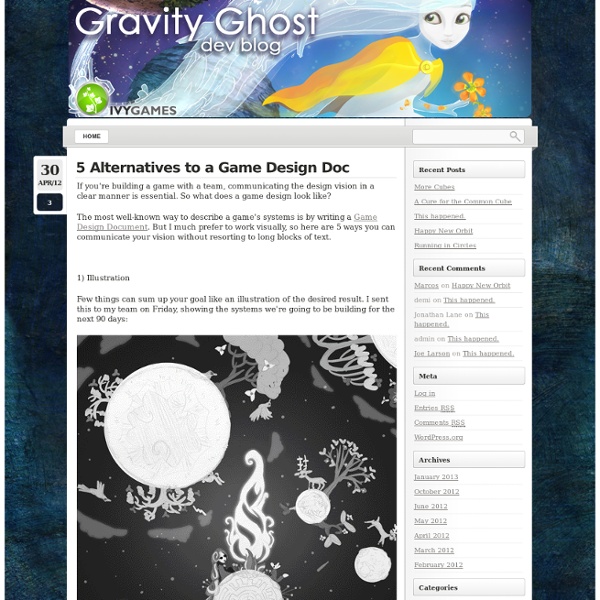5 Alternatives to a Game Design Doc « Gravity Ghost

Tiny Game Design Tool
Tile-based 2D Platformer
Now that we have decided that the player character will be represented by a kinematic object, we can move it around freely by setting the position. Let’s start with moving left/right. The movement will be acceleration-based, to give a sense of weight to the character. The two vertical bars marks the beginning and end of the frame. v1 = v0 + acceleration * dt The colored area is the translation we are supposed to apply to the player character during the current frame. translation = (v0 + v1) * dt * 0.5 This is how we integrate the acceleration and velocity to move the character in the update-loop: If you are unsure how to handle input in Defold, there’s a guide about that here. At this stage, we can move the character left and right and have a weighted and smooth feel to the controls. Gravity is also an acceleration, but it affects the player along the y-axis.
infinite_adaptive_mario [Slug Wiki]
Infinite Adaptive Mario Download: here Requires: Java 1.6 Controls: arrows to move, 's' to jump, 'a' to run Recently, there has been increased interest in building games that dynamically adapt to players. Infinite Adaptive Mario expands on Markus Persson's Infinite Mario by adapting to the skill of the player. The player begins at level 50, which produces levels with a moderate degree of challenge. The best way to get a feel for how dynamic difficulty works in Infinite Adaptive Mario is to try it out for yourself. Levels generated at the easiest and most challenging difficulty settings:
Related:
Related:



